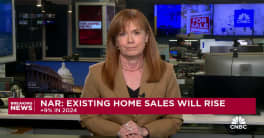Home sales might be a bit disappointing, but the National Association of Realtors® (NAR) says consumer attitudes about the economy are not the reason why. NAR's third quarter Housing Opportunities and Market Experience (HOME) survey found increasing confidence among respondents about the direction of the national economy and their own finances. There were also more responses that it was a good time to sell a house, and among renters, that it is a good time to buy.
With home prices appreciating rapidly, it is no surprise that the share of homeowners that believe now is a good time to sell is moving higher. A survey high 80 percent of homeowners said this is now a good time to list their home for sale, up from a second quarter total of 75 percent, and 13 percentage points above such responses in the third quarter of 2016.
Those higher prices can be discouraging to home buyers, still the recent survey shows a revival among renters that this is a good time to buy a home. This opinion rose from 52 percent of renters last quarter to 62 percent, slightly higher than a year earlier. Overall, among the 80 percent of respondents who are currently homeowners, those with higher incomes and those living in the more affordable Midwest and South are the most optimistic about buying right now.
NAR Chief Economist Lawrence Yun says it is great news that homebuyer and seller optimism is advancing, but it remains unclear if it will actually translate to more sales. "The housing market has been in a funk since early spring because of the ongoing scarcity of new and existing homes for sale," he said. "The pace of new home construction has not meaningfully broken out this year, and not enough homeowners at this point have followed through with their belief that now is a good time to sell. As a result, home shoppers have seen limited options, stiff competition and weakening affordability conditions." He added, "Buyer demand is robust this fall, but the disappointing reality is that sales will continue to undershoot their full potential until supply levels significantly improve."
Even though a typical down-payment on a first-time home purchase has been 6 percent for three straight years, two-thirds of those responding to the survey said saving for a down payment on a home purchase is challenging. Yun commented, "Rents and home prices have outpaced incomes in the past few years, and this is undoubtedly impacting their (renters) ability to put aside savings for a home purchase, even if they increasingly believe it's a good time to buy. Heading into next year, higher home prices and limited inventory in the affordable price range will likely continue to hold back a share of renters who would prefer to be homeowners."
Fifty-seven percent of respondents believe the economy is improving compared to 54 percent in the second quarter and 48 percent a year ago. Those living in rural and suburban areas were more optimistic about the economy than respondents residing in urban areas. A majority of homeowners and those with incomes above $50,000 also had a positive outlook on the economy.
This increased economic confidence is also shoring up respondents' attitude about their own finances. The HOME survey's monthly Personal Financial Outlook Index, showing respondents' confidence that their financial situation will be better in six months, jumped from 57.2 (on a 100-point scale) in June to 62.0 in September. A year ago, the index was 58.6.
"Jobs are plentiful, wage growth is finally showing signs of life, home values are up considerably in the past five years and the stock market is at record highs," said Yun. "The economy is not perfect, and growth overall is still sluggish, but the financial health of the typical household looks as healthy as it has since the recession."
Slightly more than half of the renters surveyed said they expect their rents to increase next year, but among that 51 percent, 42 said percent said they will either sign a new lease or move to a cheaper rental. Only 15 percent plan to buy a home.
The HOME survey was conducted June through early September by phone with about 900 respondents, both homeowners and renters. The data was compiled for this report and a total of 2,709 household responses are represented.







